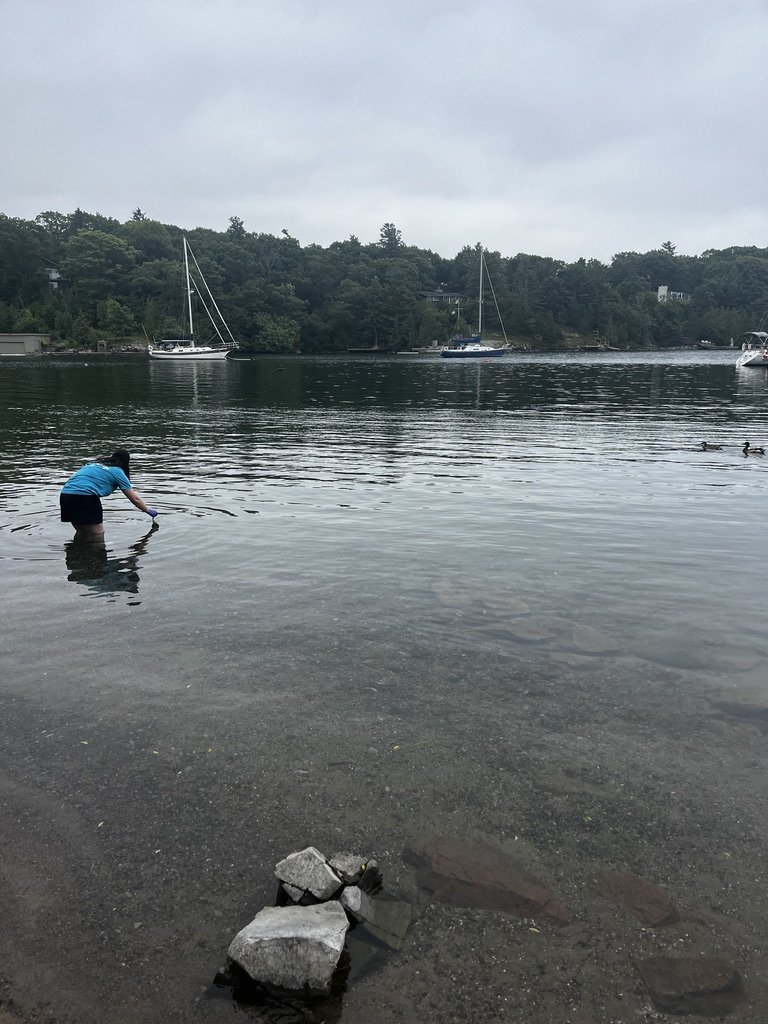
Section 2:
Program Planning
Introduction to Program Planning
The first step in developing your water monitoring hub it to start planning your program! Ensuring that you have a strong plan before you start sampling is crucial for the success of your program. This section of the Toolkit will cover how to find a site that it suitable for monitoring, detailing the best sites to sample recreationally. We will also describe the steps to conducting an Environmental Health and Safety Survey (EHSS) to develop a final assessment report to share with the general public.
For more information review the Standard Operating Procedures document.
Finding a Suitable Site to Monitor
The first thing you’ll want to do is choose a monitoring location and answer the question why do I want to monitor the water? Swim Drink Fish recreational water quality monitoring is conducted at sites that meet the following three criteria:
People are actively using the water, or people would actively use the water if they felt comfortable doing so.
There is no water quality testing taking place or the testing is too infrequent or covers too broad an area or the water quality testing parameters are different than what you’d like to test for.
There are questions or concerns about the water quality and/or the site is vulnerable to pollution.
These criteria help identify sites that would benefit from recreational water quality monitoring. If your site does not meet these criteria, there may be another type of monitoring that will better suit the waterbody. To select your site, fill in the Site Suitability Research document. This includes all of the relevant background information for your monitoring site, prior to monitoring. Completing this document will help you ensure that your monitoring program will be impactful.
Download the ‘Site Suitability’ Research Document
Creating a Monitoring and Program Plan
Behind every great monitoring program is a great monitoring program plan. Once you know where you’d like to start monitoring and have assessed the site safety, you can download our monitoring plan workbook and start filling it out to help address the who, what, where, when, and whys of your program. You’ll want to complete this document collaboratively if you’re working with other people or groups.
When you are creating your monitoring plan, it is extremely important to keep in mind the goal of your monitoring program. This will allow you to only collect data that forwards this goal and will prevent the scope of data collection from getting too large. For example, if your site goal is to advocate for the beach to become a designated swimming area in the future, it might be beneficial to collect environmental data on water users, to demonstrate that there is already high site use, however you may choose to skip litter and wildlife data collection.
Begin to complete the Monitoring Plan Design document. The Monitoring Plan outlines the division of labour in the monitoring program, along with what information you will be collecting and how your data will be managed. Some sections in this document are OK to leave blank- filling out the plan design is an iterative process. As you complete other materials you’ll come back to fill in sections of the plan you weren’t able to before. Be sure to have finished this document prior to your first sampling day.
Download the Monitoring Plan Design Workbook
Conducting an Environmental Health and Safety Survey
An Environmental Health and safety survey (EHSS) is:
“The foundation or "blueprint" for designing and implementing an effective risk management plan for recreational waters. It is a comprehensive search for, and assessment of, existing and potential water quality hazards (biological, chemical and physical) and their associated risks to the health and safety of the public at designated beach areas”
The Environmental Health and Safety Survey (EHSS) is a key component for creating a recreational water quality monitoring program that is safe and effectively monitors your local water. Conducting an EHSS is recommended in the Canadian Recreational Water Quality Guidelines (2012). It is considered best practice to conduct an EHSS annually to protect the health and safety of site water users. They also inform the monitoring team about safety at the site and safety considerations needed to sample there.
EHSS are completed at the start of a sampling program for each recreational water location. They must be completed and updated at the start of every sampling season thereafter. These annual EHSS reports assess the potential presence of chemical, physical, and biological hazards present at a specific recreational water use area by evaluating historical environmental observation and water quality data over time. When put together with routine environmental observations and water sampling, EHSSs form a multi-pronged approach to recreational water management.
We recommend displaying EHSS’s publicly, for everyone to learn about the site. You may display these on your website, or reach out to Swim Drink Fish staff to display your EHSS on our website.
Steps for Conducting an EHSS Report
This section of the module will provide an overview of the steps to conducting an EHSS survey at your site. For a detailed guide, please download the “EHSS step-by-step guide” PDF for an in-depth description of the steps, tools, and methodologies needed to develop, conduct, and publish your EHSS information. You can also download the “final report template” for PDF or Canva to begin editing and following along with the steps provided.
Step 1: The Preliminary Assessment
The purpose of this section is to develop a good understanding of the site before you conduct your in-field survey. Understanding the defined area, knowing general land use, and pre-determining potential hazards will make the survey portion of the EHSS easier to conduct. Follow the steps below to complete your preliminary assessment prior to your field visit.
Find general site information
Identify and map the sites watershed
Fill in additional waterbody information found on the final report template
Determine historical water quality and trends
Determine surrounding land use
Determine upstream pollution risks
Conduct a preliminary hazard assessment
Download the EHSS step-by-step guide
Step 2: In-Field Survey
During this section of the EHSS process, you’ll conduct an in-field visit to confirm the hazard assessment that was completed in stage one. By visiting the site, you’ll also be able to add any other relevant information that was not detectable from aerial imagery, surrounding land use analysis, and research to your EHSS. The in-field survey should ideally be completed multiple times for the same site to capture different environmental conditions. The general recommendation is twice, once on a day with precipitation and once when it's dry. Use the “EHSS in-field Survey” link to develop a site specific survey to record observations.
Creating and customizing the in-field EHSS Survey
Conduct an in-field site visit to complete the EHSS Survey
Digitize your final results
Step 3: Assessment Report
In this section, you will develop the final EHSS report, which can be shared amongst staff and/or publicly. This should be a well-edited final product where you combine your knowledge from both the Preliminary Assessment and the In-Field Survey to finalize your hazard and risk assessment. Follow the steps below to develop your final report.
Transfer and confirm the information from the in-field survey
Add risk assessments notes to the final report
Begin to develop your monitoring map
Determine the site boundary
Determine the beach length and width
Add recommendations for the site
Finalize and upload your EHSS report
Final report template link
EHSS in-field Survey link
After you have your program planned and initial environmental survey conducted, you’re ready to begin an introduction to field work! Section Three will specifically outline: preparing field work documents, taking samples, and collecting field data and observations.
NEXT SECTION








